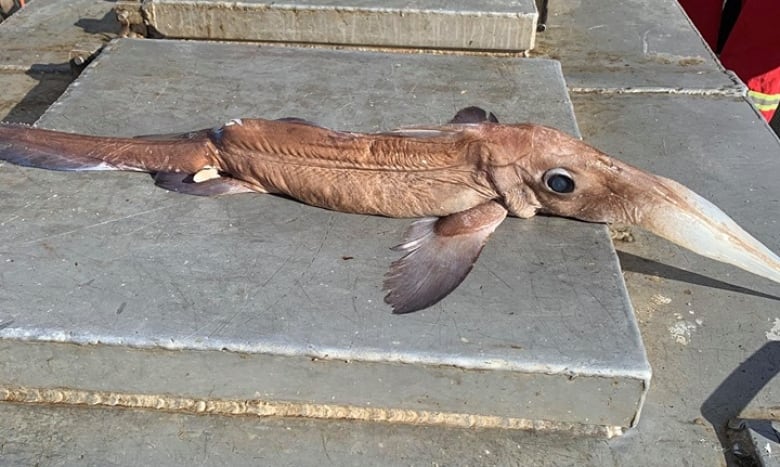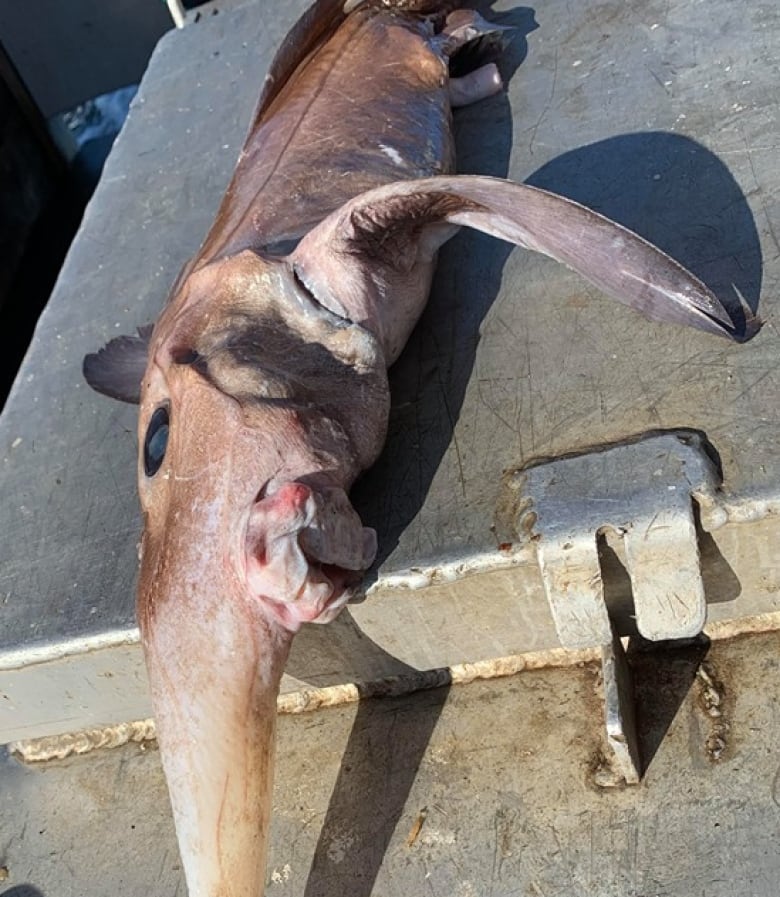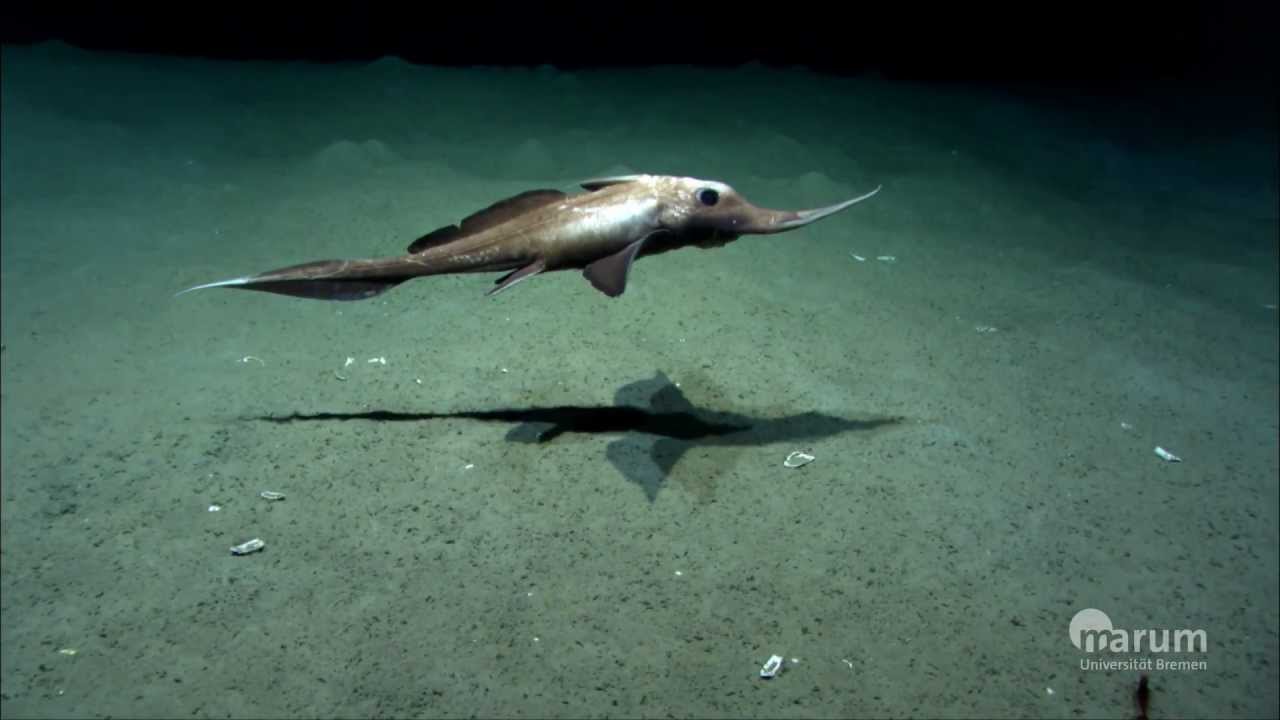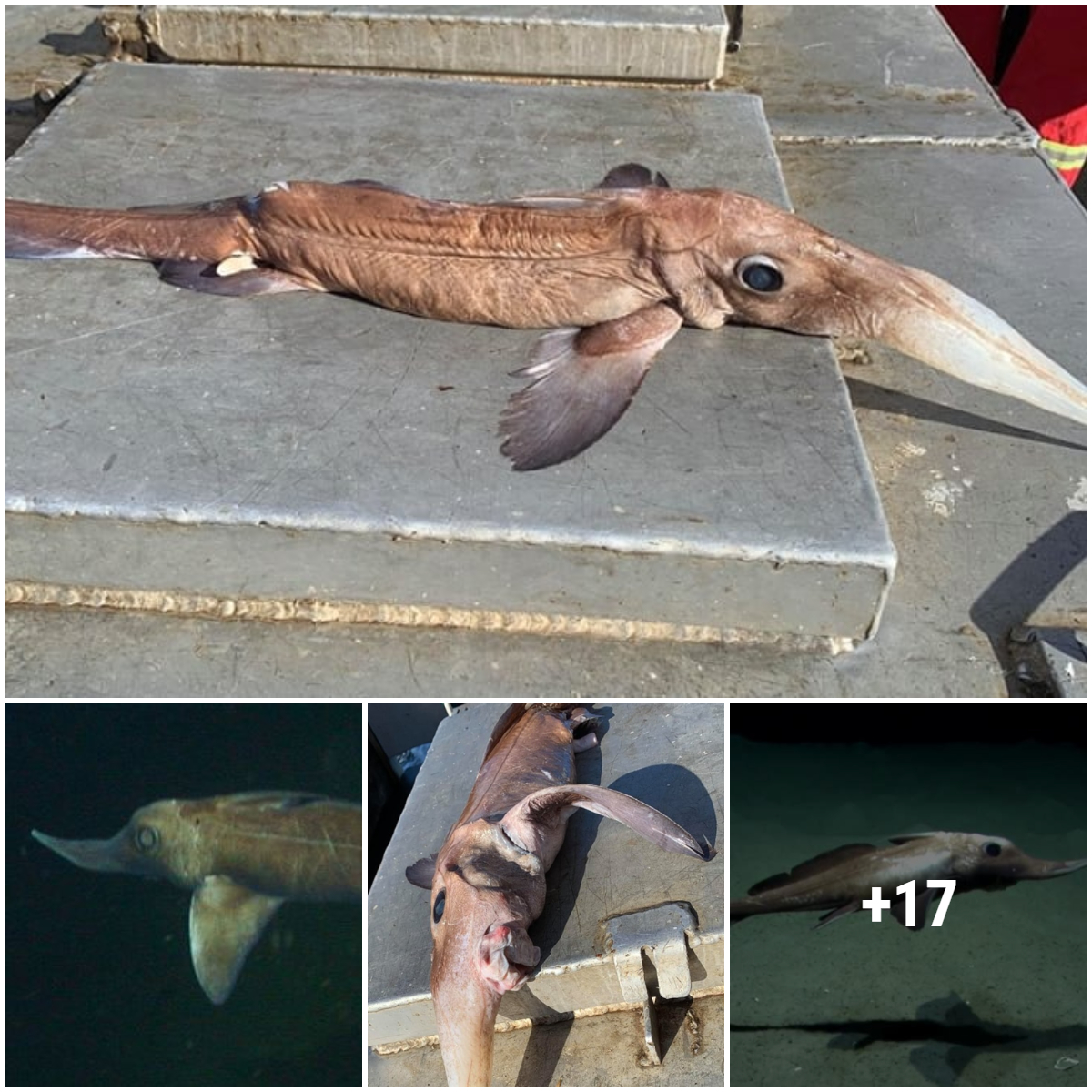During a recreational fishing trip in Newfoundland, Canada, Garry Goodyear, a young fisherman, felt that his net was caught and pulled down to an estimated depth of over 800 meters. Fearing the worst, he and his crew pulled the net up to investigate and found a bizarre-looking creature that nobody in the group could identify.

After being raised to the surface, Goodyear and his crew were amazed and baffled by the creature’s appearance. It was so strange that nobody in the group could determine what it was. Goodyear said the fish was almost one meter long and he didn’t know what to do with the creature.

After taking a picture and posting it on Facebook, Goodyear hoped that someone would identify the species of the creature. “I thought it might be a duck-billed platypus because it had a large, long beak,” he said.
One person who saw the post left a comment: “I found out it’s a long-nosed Chimaera fish.”

Goodyear was shocked and shared, “We didn’t know this monster fish had poisonous spines. We thought it was a normal fish… so we caught it by hand!”
Chimaera is a distant relative of sharks and rays, according to Carolyn Miri, a marine biologist at the Fisheries and Oceans Department in Newfoundland and Labrador. The creature is very unusual. It is a deep-water fish that can be found at depths of 200 to 1,000 meters but can also crawl on the seafloor at depths of up to 3,000 meters below the surface. This species is rarely seen in the Newfoundland area.

Carolyn Miri explained, “This fish is rarely seen in Newfoundland and Labradorians, Canada. The long-nosed Chimaera fish belongs to the cartilaginous fish family, as all the fish bones on the spine are cartilage.”
Regarding the Chimaera fish, Miri also pointed out the pair of pectoral fins on both sides of the fish, just behind the head, that look like wings. Adult Chimaeras can grow to be more than 150 cm long and have sharp teeth that can crush small creatures such as crabs, shrimp, or any mollusks that wander on the ocean floor.
Miri added, “In addition to this basic information, we find it difficult to find and study more information about their biology, history and behavior, because they are deep-water creatures, living at the bottom of the ocean and are ferocious.”
Miri believed that the fishing group was lucky that the monster fish died before it was brought on board. Therefore, it was less likely to cause any harm.
